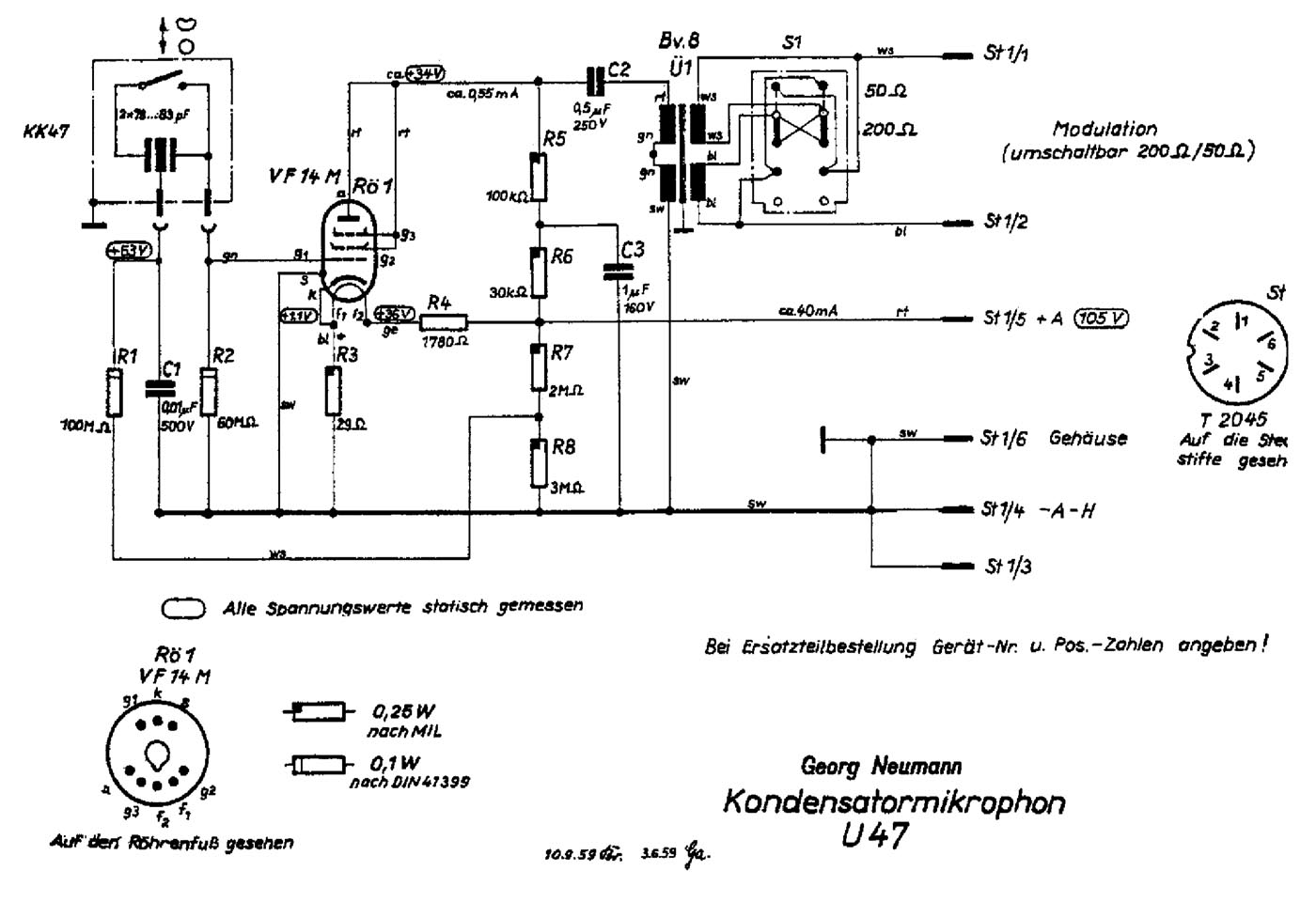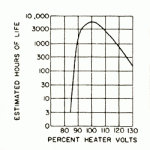Space charge smoothing arises from what is happening at the surface of the space charge, not interactions between electrons in flight to the anode. Hence it should not change much with current.
At low currents, so the space charge is very healthy, the 'shot noise' is actually thermal noise from the space charge whose temperature is set by the cathode temperature. Hence noise should reduce as the cathode temperature reduces.
At high currents, where the space charge is being depleted, there is less space charge smoothing so noise increases. A hotter cathode gives a healthier space charge so less noise. So for minimum noise at a particular current you need to find the best compromise between low thermal noise at low cathode temperature and high space charge smoothing at high cathode temperature. Higher currents need a hotter cathode.
At low currents, so the space charge is very healthy, the 'shot noise' is actually thermal noise from the space charge whose temperature is set by the cathode temperature. Hence noise should reduce as the cathode temperature reduces.
At high currents, where the space charge is being depleted, there is less space charge smoothing so noise increases. A hotter cathode gives a healthier space charge so less noise. So for minimum noise at a particular current you need to find the best compromise between low thermal noise at low cathode temperature and high space charge smoothing at high cathode temperature. Higher currents need a hotter cathode.
Space charge smoothing arises from what is happening at the surface of the space charge, not interactions between electrons in flight to the anode. Hence it should not change much with current.
Well that is a crucial point, DF96.
Strictly, shot noise is solely a property of current, ie the stream of electrons in flow between cathode and anode. No current, no shot noise. IN increases with Ia1/2, and low current is noisiest in the sense it has highest noise ratio as a fraction of current.
Shot noise smoothing happens because of interaction within the bulk of a carrier stream, and so its shape, fields, and duration can influence the factor.
What goes on at the effective emitting surface, be that a real cathode or space charge, is always Johnson noise. Random variation involving overcoming an energy barrier involving the kT term, and this varies with temperature of course.
So I suspect there are two contributors to what is commonly known as 'shot noise' in valves. Proper shot noise which varies with current, and a Johnson noise source which varies with temperature. This would tie up some loose ends, I think.
LD
True shot noise is a property of current and the charge on the charge carriers, not current alone.
As I said, shot noise smoothing happens at the surface of the space charge not between the electrons in flight. The idea is that for true shot noise each electron is completely independent so they arrive randomly. If electrons in flight interacted significantly with each other, as you say, then it would not be possible to make a thermionic noise diode.
The space charge causes a correlation to occur, because as each electron leaves the space charge it leaves a temporary imbalance in the charge distribution so that particular point is less likely to emit another electron for a brief while. As a result, the electrons are much less random so less noise. My own view is that the space charge, if sufficiently 'healthy', completely eliminates true shot noise and just leaves thermal noise: terms in qI disappear and terms in kT appear instead.
What makes noise vary with current is two effects pulling in opposite directions:
- thermal noise reduces at lower temperatures
- too low temperature for the amount of anode current means a weak space charge, so true shot noise begins to occur - if you run a valve with a high anode current and a low cathode temperature then you can get true shot noise (given by sqrt(qI)) but the cathode does not last very long (this is how a noise diode works))
As I said, shot noise smoothing happens at the surface of the space charge not between the electrons in flight. The idea is that for true shot noise each electron is completely independent so they arrive randomly. If electrons in flight interacted significantly with each other, as you say, then it would not be possible to make a thermionic noise diode.
The space charge causes a correlation to occur, because as each electron leaves the space charge it leaves a temporary imbalance in the charge distribution so that particular point is less likely to emit another electron for a brief while. As a result, the electrons are much less random so less noise. My own view is that the space charge, if sufficiently 'healthy', completely eliminates true shot noise and just leaves thermal noise: terms in qI disappear and terms in kT appear instead.
What makes noise vary with current is two effects pulling in opposite directions:
- thermal noise reduces at lower temperatures
- too low temperature for the amount of anode current means a weak space charge, so true shot noise begins to occur - if you run a valve with a high anode current and a low cathode temperature then you can get true shot noise (given by sqrt(qI)) but the cathode does not last very long (this is how a noise diode works))
After all this talking and theorizing about noise.
Hello,
After all this talking and theorizing about noise.
When it comes down to it, what I care about is what noise do I hear from my speakers or head phones?
How do I measure it?
When we speak of noise bandwidth matters!
What do you think? A-weighted RMS measurement?
How do we measure it?
Consenus?
DT
Hello,
After all this talking and theorizing about noise.
When it comes down to it, what I care about is what noise do I hear from my speakers or head phones?
How do I measure it?
When we speak of noise bandwidth matters!
What do you think? A-weighted RMS measurement?
How do we measure it?
Consenus?
DT
Anyone ever adjust the heater voltage to reduce Valve Noise?
German manufacturer G. Neumann did this in their well-known and best-reputated U47 large diaphragm condenser microphones. They fed the heater of the VF14 M tube with only about 35 volts instead of 60 volts, as indicated in this tube's datasheet.

Best regards!
> Is it relevant?
The steep fall on the low-heat side may be relevant for POWER tubes. If they aren't hot enough, they don't emit many electrons, so the least fall-off means the tube fails to make power output spec, and would be replaced in a power-crazed application (think radio transmitter).
Many small tubes are worked far-far below their maximum current ability. Underheating may not be a problem for tens of thousands of hours.
The condenser mike has a special problem because all that heater heat is inside a small microphone and cooks the guts and capsule.
The steep fall on the low-heat side may be relevant for POWER tubes. If they aren't hot enough, they don't emit many electrons, so the least fall-off means the tube fails to make power output spec, and would be replaced in a power-crazed application (think radio transmitter).
Many small tubes are worked far-far below their maximum current ability. Underheating may not be a problem for tens of thousands of hours.
The condenser mike has a special problem because all that heater heat is inside a small microphone and cooks the guts and capsule.
Hello,
In audio, noise is that irritating sound that you hear when there should be silence. Remove the signal and distortion, what remains is noise. Noise is all about bandwidth that is characterized as the RMS sum of the noise voltage between the called out low frequency and a higher frequency bookend, the sum of all the noise between the defining frequency limits.
What noise frequencies are our ears sensitive to? What frequencies do we measure? Are all the frequencies equally offending? If you call the local noise police to complain about your neighbors Air-conditioning unit keeping you awake at night they will send someone out with a A-Weighted sound meter to measure it. An A-weighted filter is intended to represent human hearing sensitivity at “low” level intensity. An C-weighted filter is intended to represent human hearing sensitivity at more moderate level intensity.
Rectified 60 Hz mains noise is my favorite noise to hate. 60HZ, 120HZ buzz and all the harmonics should be included in any noise measurement scheme I can imagine. Noise above 20K Hz perhaps even as low as 8K to 10K may not be problematic, maybe 3dB down 30Hz and 8k and remaining flat in between is a good compromise for a measurement bandwidth. (C-weighting) This is suitable for discussion.
Will a preamplifier, C-weighted bandpass filter and a 6 ½ digit DVM will put us in the money? I am of the impression that flicker noise will dominate this bandwidth. Do we need to put a FFT in the test loop? Do we need be concerned about weighting red, pink and white noise?
Is the C-weighted filter best suited to the measurement task?
What will best measure our noise irritation?
DT
- Status
- Not open for further replies.
- Home
- Amplifiers
- Tubes / Valves
- Reduced Heater voltage to reduce noise
